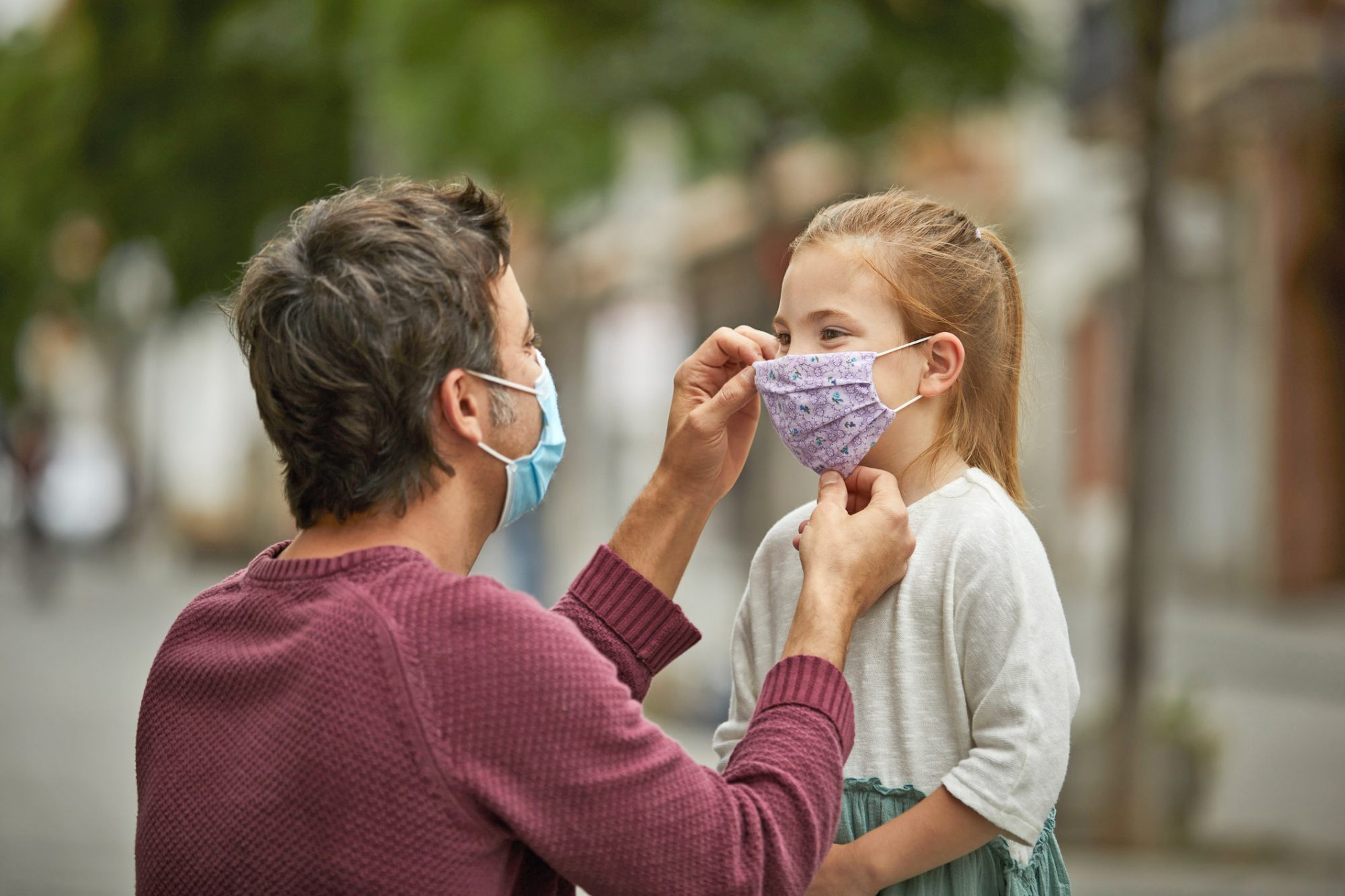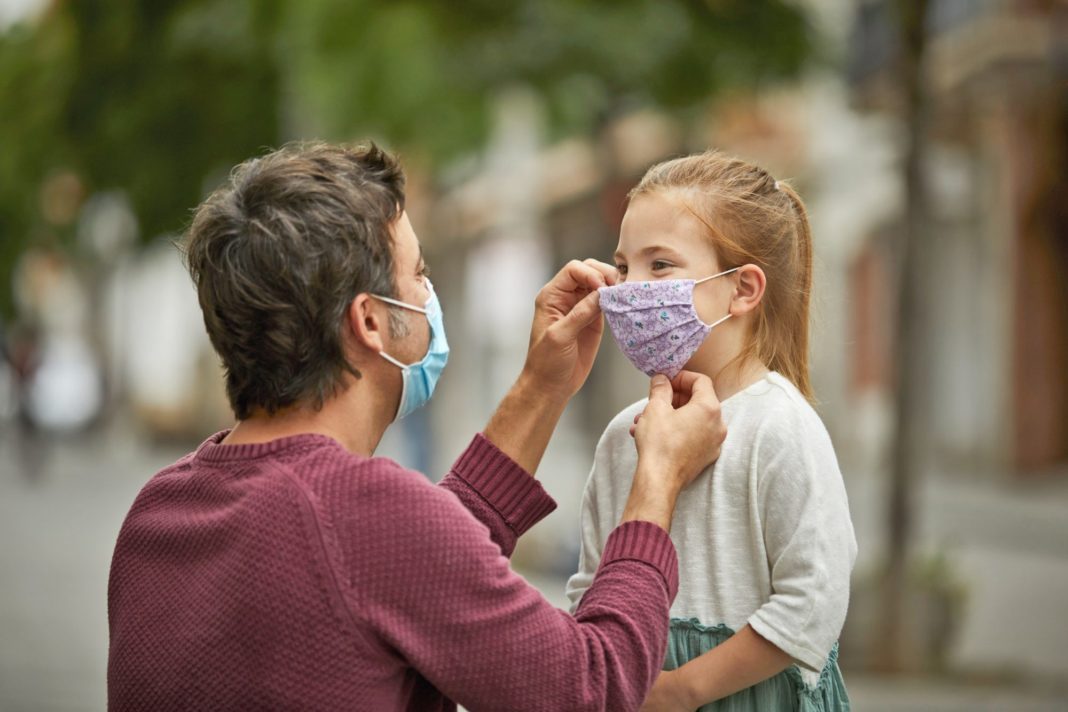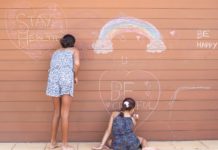For almost a year, the Centers for Disease Control and Prevention (CDC) has recommended face coverings to slow the spread of COVID-19. That's because masks block a major mode of transmission: airborne particles released when infected individuals cough, sneeze, talk, or exhale. But researchers are learning more about the coronavirus every day, and they now advise double masking in certain situations.
"The guidance is all about making sure that the mask does its job. Double masking is a way to improve the fit of the mask," explains Jeannie Kenkare, D.O., FAAFP, chief medical officer of PhysicianOne Urgent Care. Keep reading to learn more about the latest recommendations from the CDC, how to double mask your child, and situations when it's probably a good idea.

Double Masking Guidelines from the CDC
The CDC recently conducted "experimental simulations" to assess the effectiveness of face masks. They discovered two factors that can better protect the wearer:
- Ensuring your mask fits snugly to your face, with no gaps that could let infected air inside.
- Choosing a mask with multiple layers to better ward off and/or contain droplets. The CDC recommends “two or more layers of washable, breathable fabric.”
One easy way to achieve this ideal no-gap and multiple-layer scenario is wearing double face masks. "It's not really about having two masks—it's about improving the fit and filtration" by layering protective coverings, says Dr. Kenkare.
With results published on February 10, CDC experiments found that unknotted medical procedure masks blocked 56.1 percent of particles from a simulated cough, while cloth masks blocked 51.4 percent. Placing a cloth mask over a medical procedure mask led to 85.4 percent of cough particles blocked.
Additionally, when the source was unmasked and the receiver wore double masks, the receiver's cumulative exposure was reduced by 83 percent. And when the source and receiver were both fitted with double masks, the cumulative exposure of the receiver was reduced by 96.4 percent.
If your child can't double mask in high-risk situations, or they simply don't want to wear two masks, there are also ways to improve the effectiveness of a single medical procedure mask. For example, the CDC says you can knot and tuck the ear loops for a better fit. It also helps to wear a commercial mask fitter or a nylon covering over the mask. "When fitters are secured over a medical procedure mask, they can potentially increase the wearer's protection by ≥90 percent for aerosols in the size range considered to be the most important for transmitting SARS-CoV-2," says the CDC.
When Should My Kids Double Mask?
Double masking can give kids better protection against COVID-19, which is especially important as new, more infectious strains spread across the globe. That said, layering face coverings isn't always necessary. Consider adding a second mask when visiting high-risk places, such as crowded grocery stores, airports, or places with little ventilation. You can probably stick with one mask in low-risk scenarios—like walking around the block or playing in a park (while socially distanced from others). The increased ventilation of outdoor spaces will help keep your child healthy.
How to Double Mask
When double masking, it's important to wear the disposable mask underneath a cloth mask. Cloth masks are a little more secure, says Dr. Kenkare, and they're better at sealing any gaps. Always check that the mask fits snugly over your nose, mouth, and chin; check for gaps by placing cupped hands around the edges of your mask and blowing out. "If the mask has a good fit, you will feel warm air come through the front of the mask and may be able to see the mask material move in and out with each breath," says the CDC.
Tips for Choosing a Face Mask for Kids
"Particularly for kids, the masks that you can purchase have all types of fits and designs and qualities," says Dr. Kenkare. To ensure the best fit, she recommends face masks designed for children, which have a "smaller overall length and height." Ear loops should be flexible enough to fit comfortably, but tight enough to prevent gaps. Choosing a mask with a nose wire—a metal stop that bends over your nose—is also smart to prevent air leakage.
Finally, Dr. Kenkare says to choose a mask your child wants to wear, whether it's designed with Elsa figures or dinosaurs. If they're excited about their protective wear, they might be better about donning it correctly and consistently.
The Bottom Line
Double masking provides increased protection against COVID-19. Experts recommend layering a cloth mask over a disposable mask in high-risk situations—like when visiting a crowded indoor space with little ventilation.

































